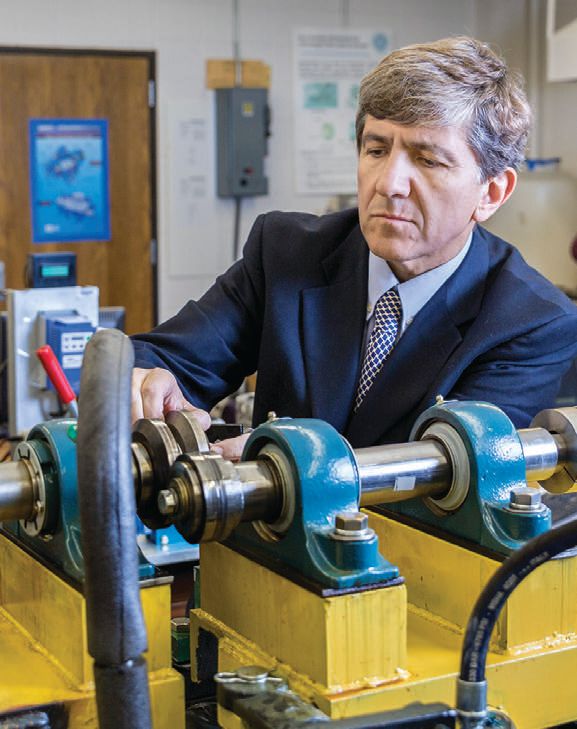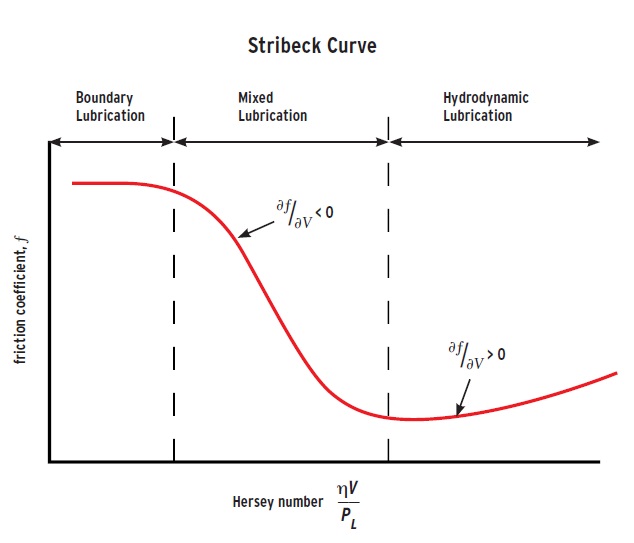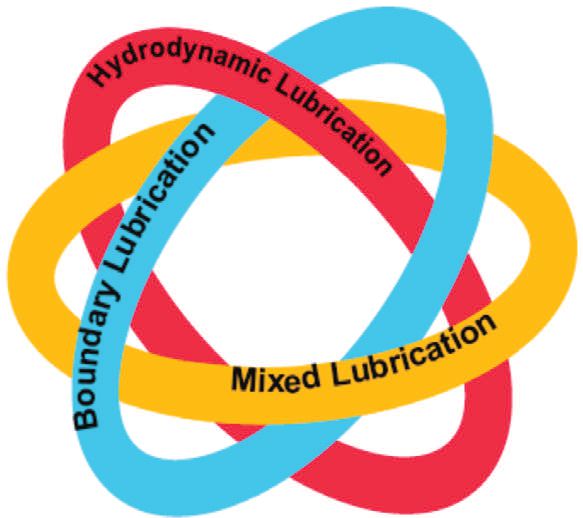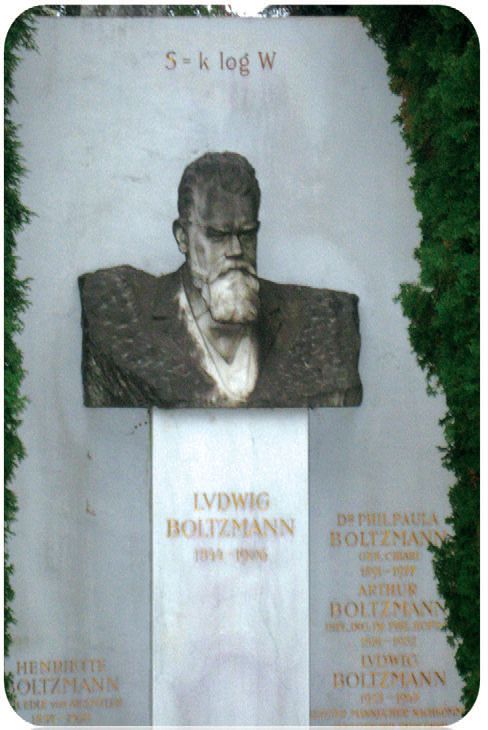20 Minutes With Dr. Michael Khonsari
Karl M. Phipps, Managing Editor | TLT 20 Minutes February 2014
This well-known tribology researcher and professor at Louisiana State University discusses the future development of a comprehensive and unified model of friction and wear.
MIKE KHONSARI - The Quick File
Mike Khonsari is the Dow Chemical Endowed Chair in rotating machinery, professor in the department of mechanical and industrial engineering and the founding director of the Center for Rotating Machinery (CeRoM) at Louisiana State University in Baton Rouge, La. As an industry/government/university center, CeRoM is dedicated to state-of-the-art research and development associated with rotating machinery with a strong educational component. The CeRoM’s R&D activities include (1.) tribology and lubrication, (2.) friction and wear, (3.) fatigue and damage analysis, (4.) measurement and testing and (5.) modeling and simulation. These activities directly support improvements in design, reliability, performance, durability of vital mechanical systems and components including, but not limited to, bearings, seals, gears, etc.
Prior to joining LSU, Mike spent a number of years as a faculty member at The Ohio State University, University of Pittsburgh and Southern Illinois University at Carbondale. He has also served as a Research Faculty Fellow at NASA Lewis Research Center, Wright-Patterson Air Force Laboratories and the U.S. Department of Energy. In addition, Mike has been appointed by Gov. Bobby Jindal (R-La.) to serve on the Louisiana Innovation Council.
Mike holds several U.S. patents and is the author of over 260 archival papers, book chapters and three books. He is the recipient of several research awards, including the ASME Mayo Hersey and Burt Newkirk Awards. He is the editor-in-chief of ASME’s
Journal of Tribology and a fellow of STLE, ASME and AAAS.
Mike earned his bachelor’s, master’s and doctoral degrees in mechanical engineering from The University of Texas at Austin.
 Mike Khonsari
Mike Khonsari
TLT: What are your thoughts about the way tribology is being taught and practiced?
Khonsari: Tribology has a rich history. In fact, a recorded drawing dating back some 4,000 years ago shows that even then workers recognized that transportation of the Egyptian colossus can be facilitated by applying lubricant to the statue’s base surface to reduce friction during sliding. So combating friction began out of necessity and grew into the fascinating science that it is today. But the question is do we really understand the nature of friction and have we reached the point that we can claim that its behavior is fully predictable?
Now, borrowing a page from any book on tribology (elementary or advanced), we see a description of the lubrication regimes as described by what is referred to as the Stribeck curve (
see illustration). Plotting the coefficient of friction,
f, as a function of a dimensionless parameter called the Hersey number (viscosity x speed/projected load) gives a unique curve that characterizes the lubrication regimes known as boundary, mixed, elastohydrodynamic and hydrodynamic lubrication. Perhaps this is a start for some sort of unification for understanding of friction in machinery. But this is only a part of the story.

Educators and practitioners of tribology have long resorted to the Stribeck curve to define the operating feature of a tribo-component in terms of these regimes. For example, sleeve bearings and thrust bearings are said to operate in hydrodynamic regime, ball and rolling element bearings in elastohydrodynamics, slowly rotating, heavily loaded gears in mixed lubrication and so on. While this type of interpretation gives a certain degree of comfort to some, it is rather troublesome because this type of a classification puts these interconnected regimes into distinct compartments. So much so that even many tribology conferences are organized in sessions around these regimes. While clearly each regime has its own challenges, this compartmentalization has somewhat limited our ability to see the big picture and the beauty of this science as a whole.
In fact, most interesting problems are at the interface between the different regimes. Take, for instance, the situation when a sudden increase in speed pushes the operation from boundary to mixed regime with a concomitant drop in the coefficient of friction. Here, of course, the dynamics of the operation changes remarkably since the variation of friction coefficient with velocity is negative (
ꝺf / ꝺV < 0), giving rise to negative equivalent damping and the associated instability. Travelling further down on the Stribeck curve, the slope of friction with velocity changes to a positive value just as lift-off occurs.
In my opinion, these regimes are inseparable and so intimately connected that structurally they form a unified configuration akin to the Borromean rings (
see illustration), wherein if one of the rings is removed the structure falls apart.
 The Borromean Rings Structure
The Borromean Rings Structure
Another example is the lubrication of a wet clutch, which is the main component of an automatic transmission device.
At the onset of engagement, the clutch operates in the hydrodynamic regime, with the disk surfaces separated by the automotive transmission fluid. As the engagement progresses, the separation gap drops, the friction surface is squeezed and deformed elastically and then the asperities come into direct contact. During this stage, the friction-lining material undergoes elastic deformation, as in the mixed lubrication regime, while the relative speed continues to drop.
Eventually, the boundary lubrication regime prevails where effectively the relative speed between the disks becomes nil, and disks lock at the conclusion of the engagement. So in one single engagement, the clutch lubrication regime traverses from hydrodynamic to elastohydrodynamic to mixed and finally to the boundary regime—all in a short time scale on the order of one second.
Therein lies the crux of the problem—no single regime can adequately describe the behavior of a clutch engagement.
TLT: Do you think a comprehensive and unified model of friction and wear will ever be developed?
Khonsari: Admittedly, the economic implications ensuing from the loss of material, energy and components’ functionality caused by friction and wear underscores the need for robust modeling techniques to quantify friction and wear. While attempts to afford comprehensive wear models have been profuse, the degree of their success has been limited owing, in large part, to the variegated nature of friction and wear.
Today, in light of the existing body of knowledge, it is acknowledged that wear of materials involves a variety of complex and physically diverse phenomena such as plasticity, fracture, chemical and physical interactions that often occur in an inextricably intertwined fashion. Accordingly, the development of novel models to properly unify the processes underlying wear and friction is an important scientific endeavor.
All of these complex phenomena (friction, wear and even fatigue) belong, in essence, to the science of degradation. All types of permanent degradation are caused by irreversible processes, which disorder the system and generate irreversible entropy. Thus, the entropy associated with the process, arising from generation of irreversible entropy, must monotonically increase. Therefore, quite naturally, irreversible thermodynamics can be used in a fundamental way to quantify the behavior of irreversible degradation, including tribological processes such as friction and wear.
For sliding wear, for example, this irreversible entropy is generated by irreversible dissipation usually associated with non-conservative friction forces and breaking of bonds. Similarly, other forms of degradation such as fatigue are consequences of irreversible processes that tend to add disorder to the system until a critical stage is reached, whereby failure occurs. Simultaneous with the rise in disorder, entropy monotonically increases. Thus, entropy and thermodynamic energies offer a natural measure of component degradation. Wear, fretting and the associated failure of tribological components can be directly linked to entropy. So, in my opinion, that irreversible thermodynamics offers a path forward.
TLT: What key parts are missing for this model to become a reality?
Khonsari: Progress is being made, but much more work remains. Research is needed for development of a generalized modeling paradigm that accommodates both laboratory- based analyses for component accelerated life-testing and component degradation under field operating conditions— all within a unified framework. Once these ideas are fully developed, it is likely that we will be in a position to treat friction, wear, fatigue and other degradation problems in a fundamental and unified fashion. But research is needed to fulfill this objective.
TLT: What common tribology tests do your lab run that provides valuable information to the industry?
Khonsari: At LSU’s Center for Rotating Machinery, we are engaged in a variety of testing ranging from friction and wear, dynamics and vibration analysis of machinery, fatigue and damage analysis, measurement, testing and sensing. The CeRoM is equipped with several tribometers and bearing test machines with capability of testing oscillatory motion in pinjoint, fretting tests, roller and ball bearing testing machines, heavily loaded gear simulating tester, mechanical seal testing facility, surface profilometers, rheometers, laser texturing and several fatigue testing machines, including bending, tension- compression, rotating bending and a high-load capacity fatigue tester with combined tension-compression and torsion capability.
These instruments directly support industry to improve design, reliability, performance prediction of vital mechanical systems and components, including bearings, seals, gears and the like.
TLT: What are the hot topics in industrial tribology?
Khonsari: I believe new materials that can withstand higher loads and resist degradation forces are going to be among the topics of future interest to the tribology community. Tribology could play a key role to further President Obama’s Materials Genome Initiative, with the goal of discovering, developing and deploying materials twice as fast.
Further objectives would be to develop accelerated testing methodologies that can forecast the life cycle of new materials under the field operating conditions. These are also critical issues in manufacturing processes where tribology research and development are key to the development of successful components.
TLT: Any other thoughts you would like share with readers?
Khonsari: I am reminded of the great works of noteworthy scientists and engineers who have made lasting contributions, although sometimes they were not recognized during their lifetimes. For example, Austrian physicist Ludwig Boltzmann took his own life in 1906 after prolonged controversy with his contemporaries on the statistical treatment of thermodynamics. The power of his scientific contribution is now well recognized and, in fact, his famous entropy equation is carved on his tombstone in Vienna, Austria. (
see photo.) So to the student of tribology I say, “Have faith in your ideas.”

As German physicist Max Planck once said, “A new scientific truth does not triumph by convincing its opponents and making them see the light but, rather, because its opponents eventually die, and a new generation grows up that is familiar with it.”
You can reach Mike at khonsari@me.lsu.edu.